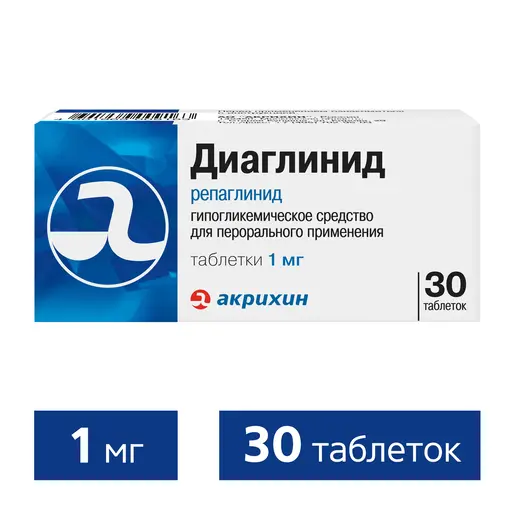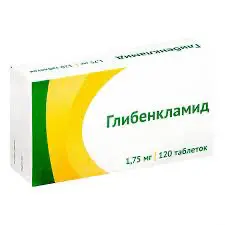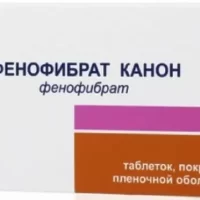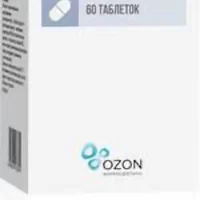Description
Diaglinide Pharmacodynamics
Oral hypoglycemic agent, stimulates release of insulin from functioning beta-cells of the pancreas. It blocks ATP-dependent channels in the membranes of beta-cells through target proteins, which leads to depolarization of beta-cells and opening of calcium channels. The increased influx of calcium ions induces insulin secretion. In patients with type 2 diabetes the insulinotropic response to a meal is observed within 30 min after the meal. This provides a decrease in blood glucose concentration during the whole period of the meal. At the same time, the plasma concentration of repaglinide decreases rapidly, and 4 hours after taking the drug, low concentrations of repaglinide are detected in the plasma of patients with type 2 diabetes. When using repaglinide in the dose range from 0.5 to 4 mg, a dose-dependent decrease in glucose concentrations is observed.
Indications
Type 2 diabetes mellitus (when diet, weight loss and physical activity are ineffective) in monotherapy or in combination with metformin or thiazolidinedione in cases when satisfactory glycemic control cannot be achieved by monotherapy with repaglinide or metformin or thiazolidinedione.
Contraindications
– Known hypersensitivity to repaglinide or to any of the components of the drug;
– type 1 diabetes mellitus;
– diabetic ketoacidosis; diabetic precoma and coma;
– Infectious diseases, major surgical interventions, and other conditions requiring insulin therapy;
– severe hepatic dysfunction;
– concomitant administration of gemfibrozil (see Interaction with other medicinal products);
– lactase deficiency, lactose intolerance, glucose-galactose malabsorption;
– Pregnancy and lactation;
– age less than 18 years old.
Clinical studies in patients under 18 years of age and over 75 years of age have not been conducted.
Caution:
(need for closer monitoring) should be used in mild to moderate hepatic dysfunction, febrile syndrome, chronic renal insufficiency, alcoholism, general seriousness, malnutrition.
Pregnancy and lactation:
Studies on the use of repaglinide in pregnant women and nursing mothers have not been conducted. Therefore, the safety of repaglinide in pregnant women has not been studied. If it is necessary to use the drug during breastfeeding, breastfeeding should be discontinued.
Dosage and administration
- Diaglinide is prescribed as an adjunct to diet and exercise to reduce blood glucose concentrations, its administration should be timed with meals.
- The drug is taken orally before main meals, usually 15 minutes before a meal, but it may also be taken between 30 minutes before a meal and the immediate meal.
The drug dose is adjusted individually for each patient depending on the blood glucose concentration. - The initial dose is 0.5 mg/day (if a patient has taken other oral hypoglycemic drug – 1 mg). Dose adjustment is carried out once a week or once every two weeks (with reference to the blood glucose concentration as an indicator of response to therapy).
- The average daily dose is 4 mg three times daily; the maximum dose is 16 mg/day.
- Transfer patients from therapy with other oral hypoglycemic drugs to therapy with repaglinide may be performed immediately. At the same time, no exact correlation between the dose of repaglinide and the dose of other hypoglycemic drugs has been revealed. The recommended maximum initial dose of repaglinide when transferring from other hypoglycemic drugs, is 1 mg before the main meal.
- Combination therapy.
- Repaglinide may be prescribed in combination with metformin or thiazolidinedione if blood glucose control is inadequate on monotherapy with metformin, thiazolidinedione, or repaglinide. The same initial dose of repaglinide is used as for monotherapy. Then, the dose of each drug is adjusted depending on the achieved blood glucose concentration.





